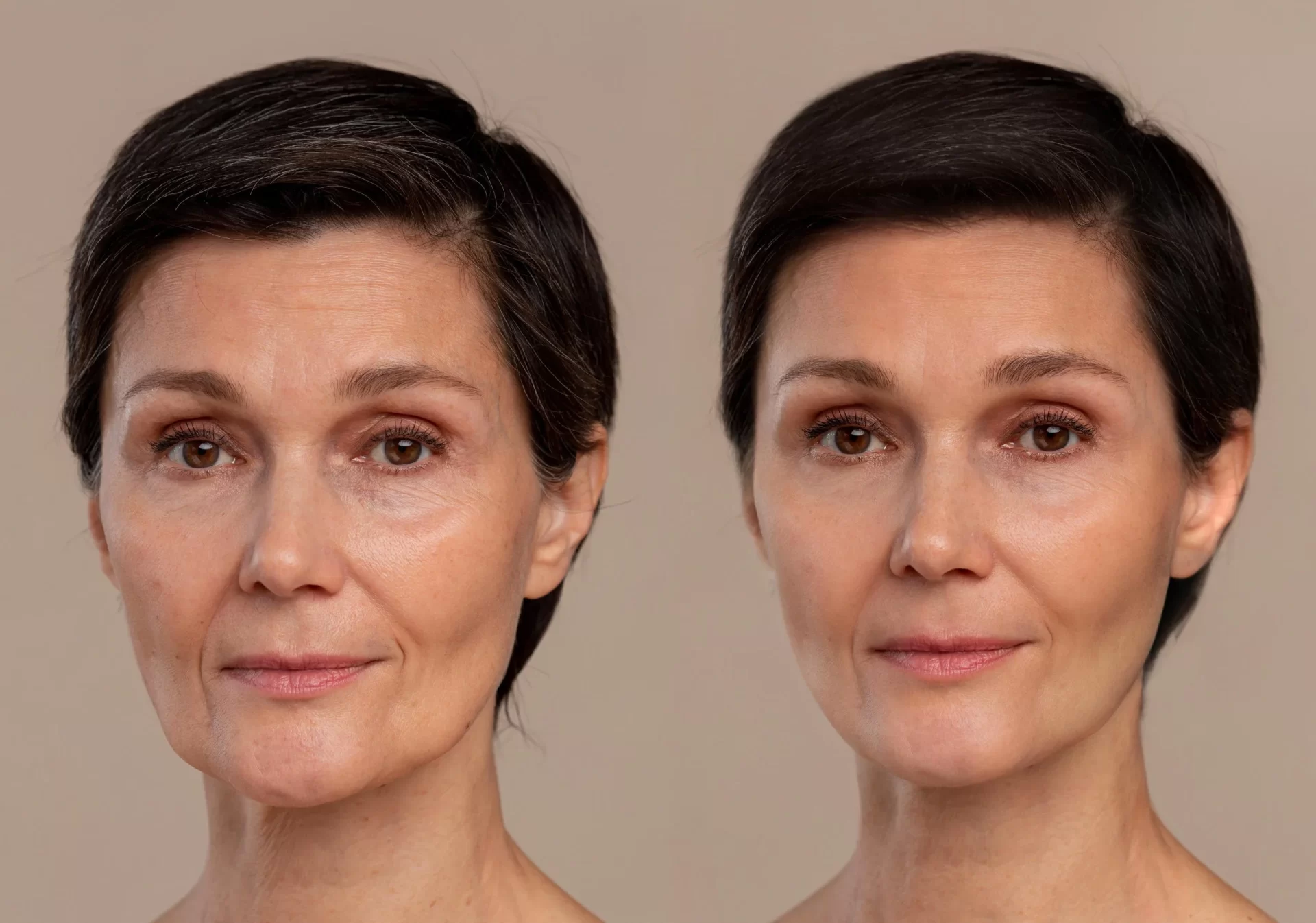-
Opening hours :
Monday - Saturday, 10am - 05pm
-
Address :
10 A, Gita Smriti Buliding, 2nd Floor, Grant Road, Mumbai - (Near Westside Store)
Exosome :
As we age, our skin loses the ability to maintain collagen synthesis and repair damaged cells. Exosomes, a newly-introduced (2022) treatment, uses ASCE+ Derma Signal Complexes-think of them as messengers that
quickly deliver helpful information to skin cells. Exosomes facilitate intracellular communication by merging with old skin and hair cells and releasing information to them, allowing them to regenerate, rejuvenate and improve.
These skin-saving messenger cells facilitate the exchange of:
Keratin, for stronger hair.
Fibroblasts, which secrete collagen for more youthful skin.
Immune cells, to improve skin healing and regeneration.
9 growth factors to hasten skin repair and increase firmness and elasticity.
6 peptides that work as anti- inflammatories and help aid in wound healing (fun fact: a wrinkle is considered a “wound”!).
Hyaluronic acid, which holds 1000 times its weight in water, to hydrate the skin and aids in moisture retention.
Vitamins and minerals to maintain skin health.
Glutathione, a powerful antioxidant that helps lighten dark spots and brighten skin.
Exosomes can be applied topically or by using the exclusive Nanosoft® needle. Because of its easy absorption, you may enjoy it as an add-on to a basic facial, or yield even better results by combining it with RF microneedling treatments that penetrate deeper into the skin, such as VivaceR and Skin Genius®. By applying Exosomes directly to the tissue, we skip the long cellular division process and go straight to replenishment and regeneration. As a result, younger-looking, more vibrant, and healthy skin tissue is formed and regenerated!
- Regenerative Healing
- Non-invasive Treatment
- Targeted Delivery
- Immune System Modulation
- Anti-inflammatory Properties
- Neuroprotective Effects
Frequently Asked Questions (FAQ’s)
How it works ?
Exosome treatment works by utilizing exosomes, tiny vesicles secreted by cells that contain valuable biological material such as proteins, lipids, and RNA. These exosomes can carry therapeutic molecules and deliver them to specific cells, tissues, or organs. When used in treatment, exosomes are harvested from donor cells (often stem cells) and then processed for therapeutic purposes. They are introduced into the patient’s body through injections or other methods, where they interact with damaged or diseased cells. The exosomes release their cargo, stimulating healing, reducing inflammation, or promoting tissue regeneration. By mimicking natural cell-to-cell communication, exosome therapy provides a targeted, non-invasive solution that can promote recovery and improve the overall function of the affected area.





